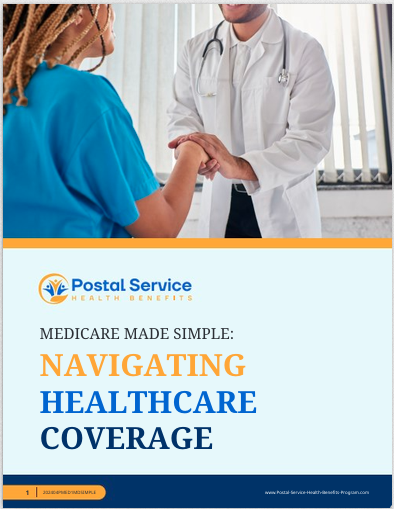Key Takeaways
-
Understanding the structure of copayments and coinsurance in PSHB plans can help you better anticipate your healthcare costs throughout the year.
-
Knowing when and how these cost-sharing features apply empowers you to make informed decisions about medical services and budgeting.
The Basics of Copayments and Coinsurance
If you’re enrolled in a Postal Service Health Benefits (PSHB) plan, you’ve probably come across terms like “copayments” and “coinsurance.” These are two essential cost-sharing features designed to split healthcare expenses between you and your insurance plan. But how do they work, and what should you expect to pay when you access healthcare services? Let’s break it down so you’re not caught off guard at your next medical appointment.
What Are Copayments?
A copayment, or copay, is a flat fee you pay out-of-pocket each time you receive a specific service. For example, when you visit a primary care physician or fill a prescription, you’ll likely have a copay associated with that service. Copays are predictable, making them easier to budget for, and they usually apply immediately after your plan coverage begins.
-
Key Point: Copays are fixed amounts and often differ by service type, such as a lower copay for routine doctor visits compared to specialist consultations or emergency room visits.
What Is Coinsurance?
Coinsurance, on the other hand, is a percentage of the cost of a covered service that you’re responsible for paying. Unlike copays, coinsurance only kicks in after you’ve met your annual deductible. The percentage can vary depending on the service and whether you use in-network or out-of-network providers.
-
Key Point: Coinsurance usually applies to services like surgeries, hospital stays, or diagnostic tests. It’s calculated as a percentage, so your costs will depend on the total bill.
When Does Cost Sharing Apply?
Understanding when copayments and coinsurance apply is crucial for managing your healthcare expenses. Here’s a general outline to help you navigate these costs.
Before Meeting Your Deductible
In most PSHB plans, you’ll need to meet your annual deductible before coinsurance comes into play. However, copayments often apply even if you haven’t met your deductible yet. For example:
-
You’ll likely pay a copay for doctor visits, prescription medications, or urgent care services right away.
-
Coinsurance typically applies only to larger expenses, like hospitalizations or advanced imaging, after your deductible is met.
After Meeting Your Deductible
Once you’ve paid your deductible for the year, coinsurance becomes your primary out-of-pocket expense for services covered under this structure. At this point:
-
Your plan covers a set percentage of the cost (e.g., 70%), and you’re responsible for the remaining percentage (e.g., 30%).
-
This cost-sharing continues until you reach your plan’s annual out-of-pocket maximum.
Understanding Preventive Services
One great feature of PSHB plans is that most preventive services are fully covered without requiring a copayment or coinsurance. These include routine screenings, annual physicals, and vaccinations. This benefit applies regardless of whether you’ve met your deductible, so it’s a good idea to take advantage of these services to stay healthy and avoid higher costs down the line.
The Role of In-Network and Out-of-Network Services
Your out-of-pocket costs for copayments and coinsurance can vary significantly depending on whether you use in-network or out-of-network providers.
In-Network Providers
PSHB plans have a network of preferred providers who agree to lower rates for their services. Using in-network providers generally means:
-
Lower copayments and coinsurance percentages.
-
Reduced overall costs, as these providers have negotiated rates with your insurance plan.
Out-of-Network Providers
If you choose to see an out-of-network provider, you’ll likely face higher copayments, coinsurance, and possibly even balance billing (the difference between the provider’s charge and what your plan reimburses). Additionally, the amount you pay to out-of-network providers might not count toward your in-network out-of-pocket maximum, depending on your plan.
How Annual Maximums Protect You
While copayments and coinsurance require you to share in the cost of your care, PSHB plans include an annual out-of-pocket maximum to limit your total spending. This maximum includes all copayments, coinsurance, and deductible amounts paid over the year. Once you hit this limit, your plan covers 100% of eligible healthcare costs for the remainder of the year.
-
Example: If your plan’s out-of-pocket maximum is $7,500, you won’t pay anything for covered services beyond this amount, giving you financial protection against unexpectedly high medical expenses.
Tips for Managing Copayments and Coinsurance
Navigating healthcare costs can feel overwhelming, but a few strategies can help you stay on top of copayments and coinsurance without breaking the bank.
1. Understand Your Plan’s Details
Take time to review your PSHB plan’s benefits summary. Pay attention to:
-
The cost of copayments for different services.
-
The coinsurance percentage for various types of care.
-
Your deductible and out-of-pocket maximum amounts.
2. Use In-Network Providers Whenever Possible
In-network providers offer the most cost-effective care. If you’re unsure whether a provider is in-network, contact your plan’s customer service or use their online directory.
3. Take Advantage of Preventive Care
Since preventive services are typically covered at 100%, use these benefits to catch potential health issues early and avoid costly treatments later.
4. Budget for Ongoing Expenses
If you expect to need regular care or prescriptions, estimate your annual costs for copayments and coinsurance. Setting aside funds in a flexible spending account (FSA) or health savings account (HSA) can also help.
5. Keep Track of Your Spending
Monitor your medical expenses throughout the year to see how close you are to reaching your deductible or out-of-pocket maximum. This can help you anticipate when your cost-sharing responsibilities will change.
Why Copayments and Coinsurance Matter
Understanding how copayments and coinsurance work in your PSHB plan isn’t just about managing your finances—it’s about ensuring you can access the care you need when you need it. These cost-sharing elements create a balance that makes healthcare services more affordable overall while encouraging you to make mindful choices about your care.
By planning ahead and knowing your plan’s details, you’ll feel more confident navigating your healthcare needs without any surprises.
Staying Ahead of Your Healthcare Costs
To sum up, copayments and coinsurance play a crucial role in how PSHB plans manage cost-sharing. Whether it’s a predictable copay for a doctor’s visit or a percentage-based coinsurance for a hospital stay, knowing how these features work helps you budget effectively and make informed decisions about your care. Always remember to review your plan details, stick with in-network providers, and take advantage of preventive services to get the most value from your health coverage.






